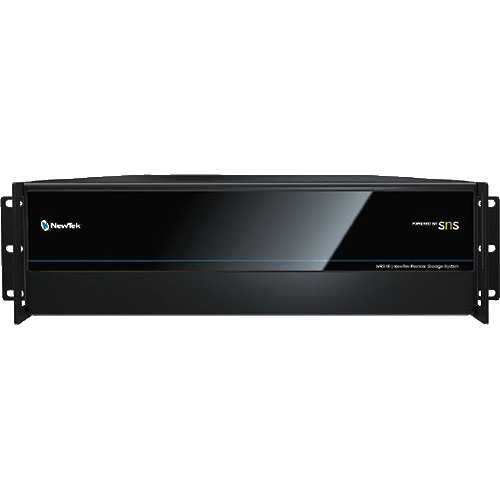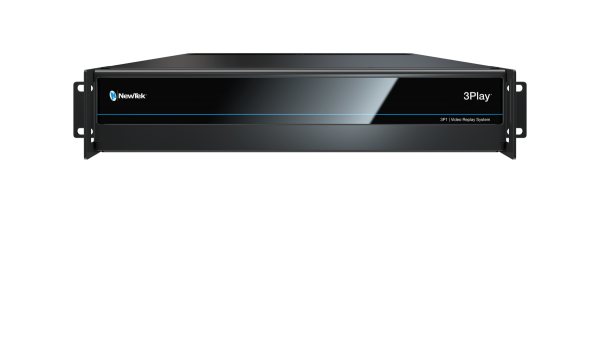Editshare’s complete media asset management environment
Description
EditShare FLOW
Collaborate and manage media from ingest through to archive
As the main Flow client for managing content, Flow Browse offers quick access to all your media and metadata with proxy files, providing flexible viewing access for all users on a project. Search, browse, view metadata, log, create sub-clips and add markers for a truly collaborative workflow. Organize media into Projects, Folders and Sequences and retrieve archived content from EditShare Ark or other 3rd party storage sources.
For quick editing on the fly, a simple cuts-only editor allows users to create sequences and drag into an NLE for finishing, with the NLE automatically re-linking to the high-resolution media. Markers and other metadata will also transfer into the NLE. Plus for smart asset sharing, Flow Browse provides the ability to import and export metadata from other systems by dragging and dropping xml or csv files.
Feature highlights:
Advanced Search
Build and save advanced searches based on any available metadata, including custom fields. You can also set the searches to automatically refresh, keeping your search results always up to date.
Projects
Powerful project management for clips and sequences. Collaborate with others in a safe way, with a unique locking feature to ensure that sequence is never accidentally modified.
Flow Scan
Flow Scan indexes all your media, extracting thumbnails, metadata and also communicating with Flow Proxy to create the necessary proxy files. Scan also allows users to set up schedules to automatically check EditShare media spaces for new content, and has a wide support for formats from regular MXF and QuickTime files, through to RED, R3D and DPX.
Batch Sidecar Metadata Import
Flow supports batch import of sidecar metadata from a wide range of 3rd-party solutions including other media asset management systems. Users will be able to configure Flow Scan and/or Automation to recognize and perform batch import of these sidecar metadata files against the corresponding media files, based on user-defined metadata mappings.
Review
Review rushes, edits or archive material, on a laptop, a workstation or a mobile device. Add comments, markers and make adjustments for a truly collaborative experience.
NLE Drag and Drop
Drag and drop clips, folders or sequences – or even your entire project structure into your NLE of choice, providing the ultimate collaborative and integrated environment.
Log
The Flow Browse simple logging tool allows you to create subclips on the fly, either during or after ingest. Add custom metadata, alongside thumbnails and other criteria for a comprehensive overview of the contents of a clip.
Add coloured markers with comments to clip or sequence timelines for mark-up and review purposes in Flow Browse. Markers and other metadata is transferred to any supported NLE when the clip or sequence is dragged into a bin.
Edit
Sequences offer a quick and intuitive way to build rough edits, without the need for an expensive NLE. Using only proxy files, you do not even need access to the high-res media – simply search, view and trim and add to a sequence.
NLE integration
Support for all leading NLEs including Avid Media Composer, Apple Final Cut Pro, Adobe Premiere Pro, Lightworks, and EDIUS. Drag and drop clips, sequences, folders or projects directly into your NLE of choice
Multicam Support
Multicam captures are linked, so that any metadata added to one angle is automatically applied to the others. Group Clips are created in Avid when you drag and drop a selection of clips or a multicam sequence from Flow into Avid
Metadata
Add and update metadata for clips or subclips, with support for a wide range of custom metadata types. Metadata follows through to your NLE when the clips or subclips are dragged from Flow into your NLE.
Flow comes with a standard set of metadata fields you’d expect from a media asset management system. This can be fully extended with a wide range of custom metadata types, from pre-defined and pre-populated lists, to simple checkboxes and text strings.
Create your own private EditShare cloud with AirFlow

It’s a given that media productions now involve multiple collaborators, so sharing content on a daily basis needs to happen securely without regard for facility boundaries or country borders. With current security and reliability of cloud-based technology prohibiting full migration to Cloud storage for production, EditShare AirFlow utilizes on-premise storage already used for high bandwidth workflows to provide secure access to media from anywhere in the world with a basic internet connection.
Remote collaboration
AirFlow brings all the media sharing capabilities of the Flow production MAM to secure multi-team multi-location productions. Its simple and intuitive web-based interface lets collaborators located anywhere in the world search, log, organize and play media content; and also upload and download content directly to and from EditShare central storage systems. Producers on the go can keep an eye on projects and view rough cuts and fine cuts on a device of their choice whether it’s a laptop, tablet or smartphone, making it easier than ever to work with talent located anywhere in the world. Reviewer comments, which are written to the Flow database in real-time, can be timecode-tagged, giving editors back at home base concrete creative direction. Organizations with multiple facilities can search for and exchange material from any of their sites. And thanks to easily customizable metadata templates, AirFlow can be deployed to support diverse workflows such as review and approval, outsourced transcriptions, marketing archival material for sale to third parties, and proxy editing with relinking to high-resolution files.
Key features:
- Platform independent, no client software installation required, simple and intuitive user interface
- Browse, search and organize content in media spaces, projects, folders and sequences
- Load custom metadata templates and view and enter clip metadata
- Download proxies and/or high-resolution files individually or in batch through web browser
- Edit remotely using downloaded AirFlow proxies locally in NLE, then relinking to high-resolution media onsite
- AirFlow license is now included with every Flow system
- For intensive AirFlow access outside of your facility, a 1U AirFlow Gateway Server can provide network isolation and additional security
- Adobe Flow Panel puts AirFlow interface and features into an integrated Premiere Pro extension window
- Support for multi-track audio, including solo and mute of specific stereo tracks during proxy playback (only available for select web browsers that support this HTML5 feature)
EditShare EFS File Auditing

Introducing a new way of enforcing accountability to secure your content against data theft. EditShare’s highly anticipated storage auditing capabilities – which will ship with all single node and enterprise class XStream EFS platforms – are realised through a sophisticated Auditing Dashboard.
Offering peace of mind for content creators
The intuitive Auditing UI will provide system administrators with a high-level view of all actions across the EFS storage pool, historic and real-time, right down to individual user and file level.
Protection and Efficiency
The design objective of the EditShare EFS Shared Storage is to minimize or manage the resource contention that is inevitable in a busy storage cluster. For example, by storing system metadata in dedicated, fast RAM, EFS response to file transactions is never delayed by other file system processes. Likewise, our approach to media file storage ensures that disk and node contention and latency are detected and managed long before they impact latency real-time operations. This same philosophy is applied to EFS File Auditing. Dedicated, redundant audit log storage means that collection and analysis of audit logs is fast, efficient and secure.
Driving forces in content security
An early advocate for content protection best practices, the Content Delivery and Security Association (CDSA) published ‘best security practices’ documents for production/post production as well as music recording studios. The CDSA advocates a multi-layer approach, spanning management, personnel asset management, physical access, IT security, training, incident management, workflow and script handling when considering the security of valuable assets and content.
The Motion Picture Association of America (MPAA), which represents Walt Disney Studios, Paramount Pictures, Sony Pictures Entertainment, Twentieth Century Fox Film Corporation, Universal City Studios and Warner Bros. Entertainment, has weighed in. Like the CDSA, the organisation recommends several layers of security practices for safeguarding critical media assets, including management oversight practices, physical security practices and digital security practices. These recommendations are outlined in its published document titled Content Security Best Practices Common Guidelines.
Compliance with the new security best practices and technologies is fast becoming the standard for production, post production and content producers doing business with studios and networks. These new content management protocols and technologies are also shaping 2018 capital investments for facilities all over the world looking to come in line with recommendations.
Better, more flexible and riskier IT-based tools
The file-based workflows, distributed collaboration, cloud-based production and IP replacement of coax and SDI have delivered on their promises to make media and entertainment content production more agile and efficient. These new workflows and solutions have also significantly expanded threat surfaces available to cyber criminals.
Application servers, media processing systems, asset management systems and media storage are typically protected from external threats by firewall solutions. LDAP-based user permissions and network policy management systems like Active Directory are being deployed to implement ‘fewest permissions’ access to critical assets. Encryption and watermarking technologies have been leveraged to prevent or detect piracy or other misuse of media assets. Firewalls, Active Directory system, encryption and watermarking can be effective barriers to cyber criminals. However, if breached (or circumvented by insiders) they provide no information about who was involved and which assets were risked.
An important missing link
The media and entertainment industry as a whole is largely aware that it is vulnerable to these types of threats. However, the challenge was that until recently, there were no shared production storage solutions designed for the M&E space that had embedded file auditing capabilities.
File auditing solutions focus on answering ‘Who did what to which files and when did they do it?’. Solutions like these are designed to deter would-be internal threats as each interaction with a given file leaves a traceable digital footprint. Pulling audit files provides administrators with a look back into the history of the facility’s operations. This can be especially useful when considering the events surrounding a data breach and then using the information as the basis for security procedures in the future.
“Application servers, media processing systems, asset management systems and media storage are typically protected from external threats by firewall solutions.”
MPAA best practices call out requirements to have file audit logging capability on all significant systems and workstations, to collect file audit logging information in a central repository and to store file audit logging information for a minimum of one year.
File auditing solutions are tightly linked with specific systems. In the case of our company’s solution, EditShare XStream EFS media storage solution, file auditing operates as part of the file system itself. As such, it ‘sees’ all user behaviours including all logins and logouts and all file opens, creations, modifications, movements and deletions.
Security information and event management
In the security industry, it is well understood that some security events can be more easily detected through correlation of separate events occurring on different systems throughout the facility.
For example, it may be possible to detect unauthorised media asset access via file moves in a storage server combined with file copies to a removable storage device such as a USB. Solutions supporting this approach are called security information and events management (SIEM) systems. To harness the power of SIEM in your video production facility, it is important to choose media production elements that are capable of forwarding file audit logs to third party systems.
Preparing with technology and protocols is the new norm
Preparedness with layered security systems and protocols is one of the best ways to protect valuable content in the era of cyber crime. In the past, security efforts were focused on creating barriers preventing access to media assets. However, as cyber criminals have found ways around these, the focus has shifted to file auditing to prevent internal and external theft. By tracking all interactions with a facility’s files we can answer ‘Who did what to which files and when did they do it?’.




